Home Reviews ,,,,, We already talked about the Kawasaki electric scooter, distributed in Italy by Puro, a few months ago at the official presentation. More recently we had the opportunity to test it in the field to try to understand how effective it can actually be in moving around the city and if it is really capable of replacing the car or bicycle on some occasion.
The regulatory gap is all Italian
The test allowed us to become a bit like children again and for this reason it was without a shadow of a doubt fun, but the difficulties in its real daily use are not few, especially in Italy, where the current regulatory vacuum does not recognize its existence. of this type of vehicle. At the time of writing, the electric scooter cannot circulate on the street (the ban on transit on public roads is sanctioned with a fine of 24 euros) as it is neither a speed accelerator nor a moped with the obligation of helmet and insurance nor a pedal assisted vehicle: therefore it would fall within the category of vehicles to be subjected to type approval.
The problem is that in theory it would not even be possible to use it on a cycle path because, according to the definition of the Highway Code, “This part of the road is reserved exclusively for cycles” and the electric scooter, as mentioned, does not fall into this category. As regards traffic on the pavement, the regulatory uncertainty remains but the risk of being stopped by the police who could contest the use of the vehicle in question cannot be excluded by applying, also on this occasion, a sanction for prohibition of circulation on the pavement. In short, in order not to incur a fine you should fly it … irony aside, we will tell you how our tests went.
How it is done
For the aesthetic details we refer you to our photos while to give you an idea of its real dimensions we tell you that, when closed, the scooter measures approximately 107 x 30 x 21 centimeters. An almost minimal footprint especially if it is positioned vertically inside a wardrobe, but which makes itself felt from the point of view of the weight , equal to about 11 kilograms .
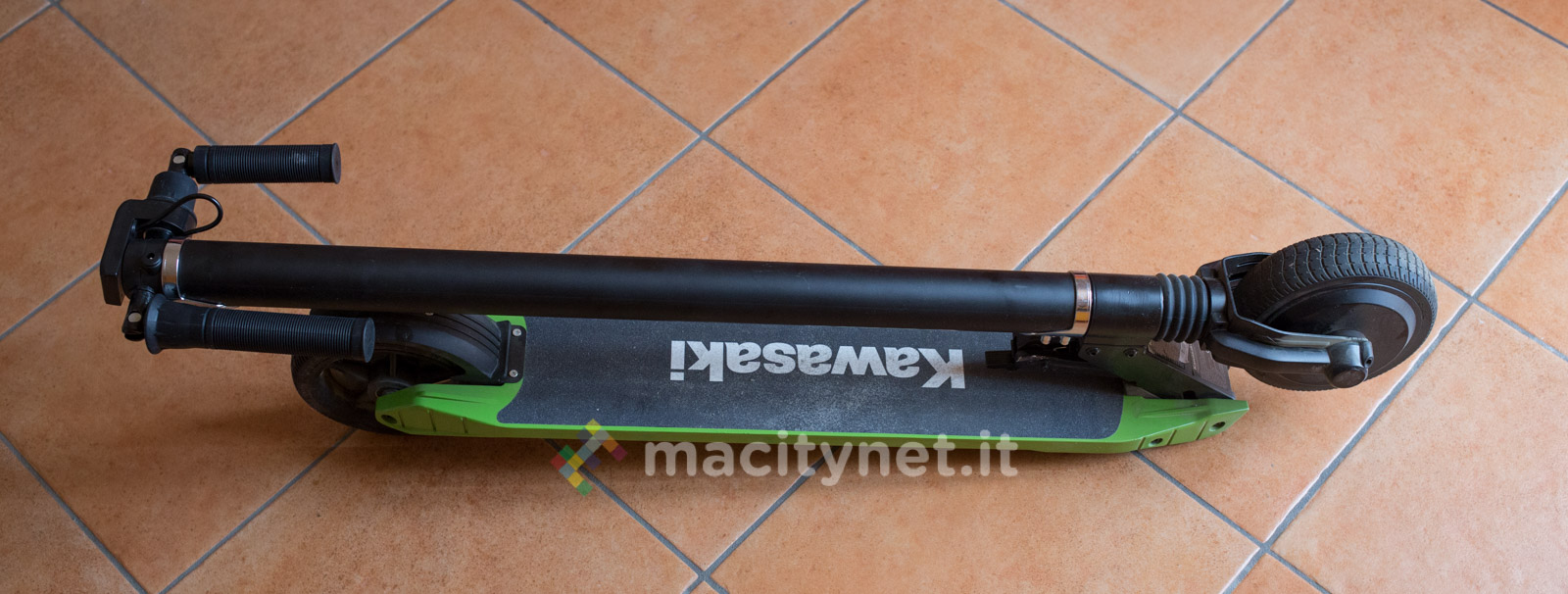
They are by no means few and they all feel when you have to carry it by hand, for example up a flight of stairs or to cross a forbidden ground. In this sense, the biggest problem lies in the absence of a handle or a system to grip it easily, moreover the weight is not evenly distributed, weighing mainly on the front part of the scooter: therefore holding it even for a few tens of meters can really be the last of the desires and the first of the anxieties when the need to lift it from the ground will reappear even for a second time.
The platform is really wide (about 51 x 13 centimeters) and therefore it is really synonymous with comfort when riding it while moving around the city. It is slightly inclined, with the front part more raised from the ground than the end part (respectively it measures 14 cm from the ground at the front and 12.5 cm from the ground at the back).
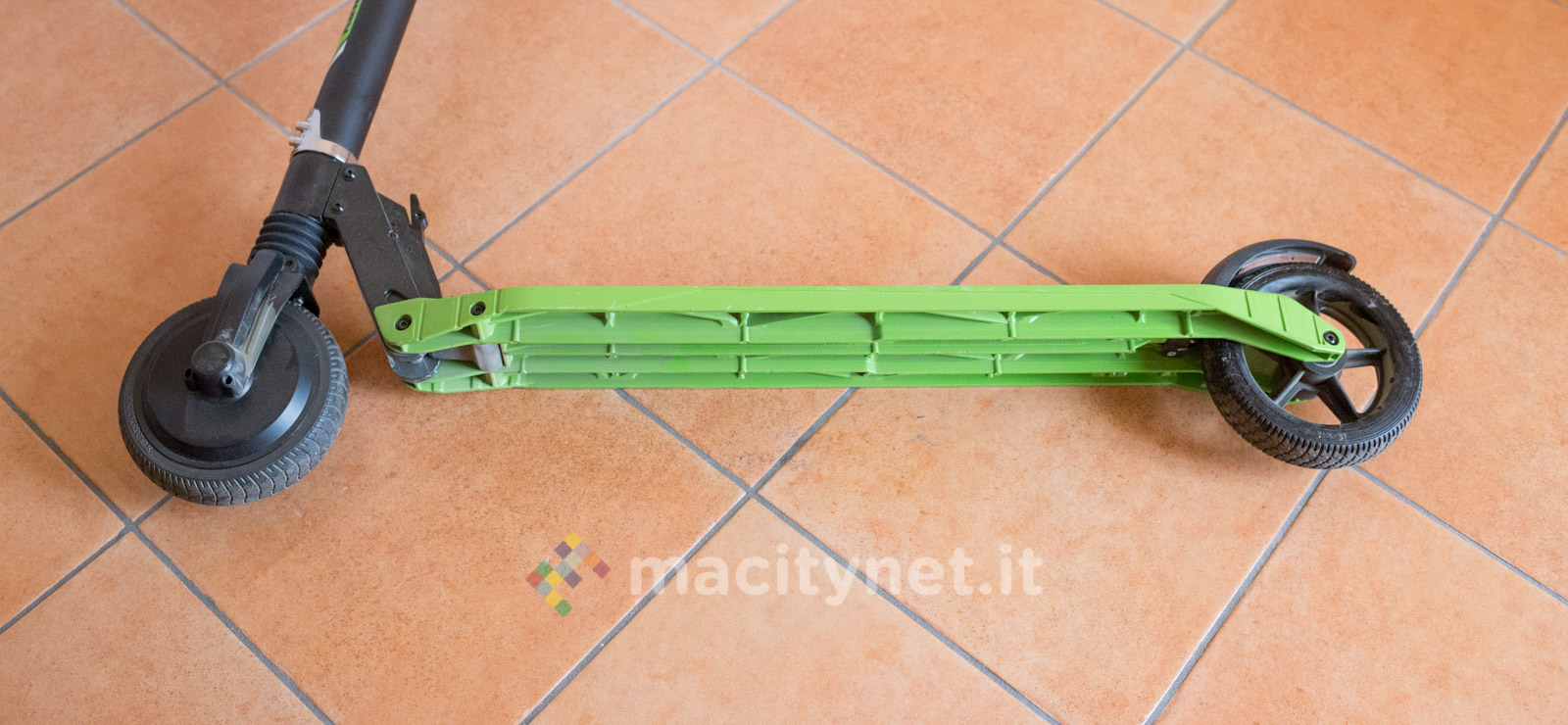
The handlebar is very thick (5.5 cm diameter inside which the battery is also installed) and at its end there is the handle , very wide (40 centimeters from one side to the other, 103 centimeters from the ground) but which can be folded to reduce bulk during transport. It is sufficient to pull each of the two parts outwards to stretch the spring, then flex them downwards: vice versa, when preparing the scooter for the race, just pull them upwards and with a click they will automatically lock in the right position .
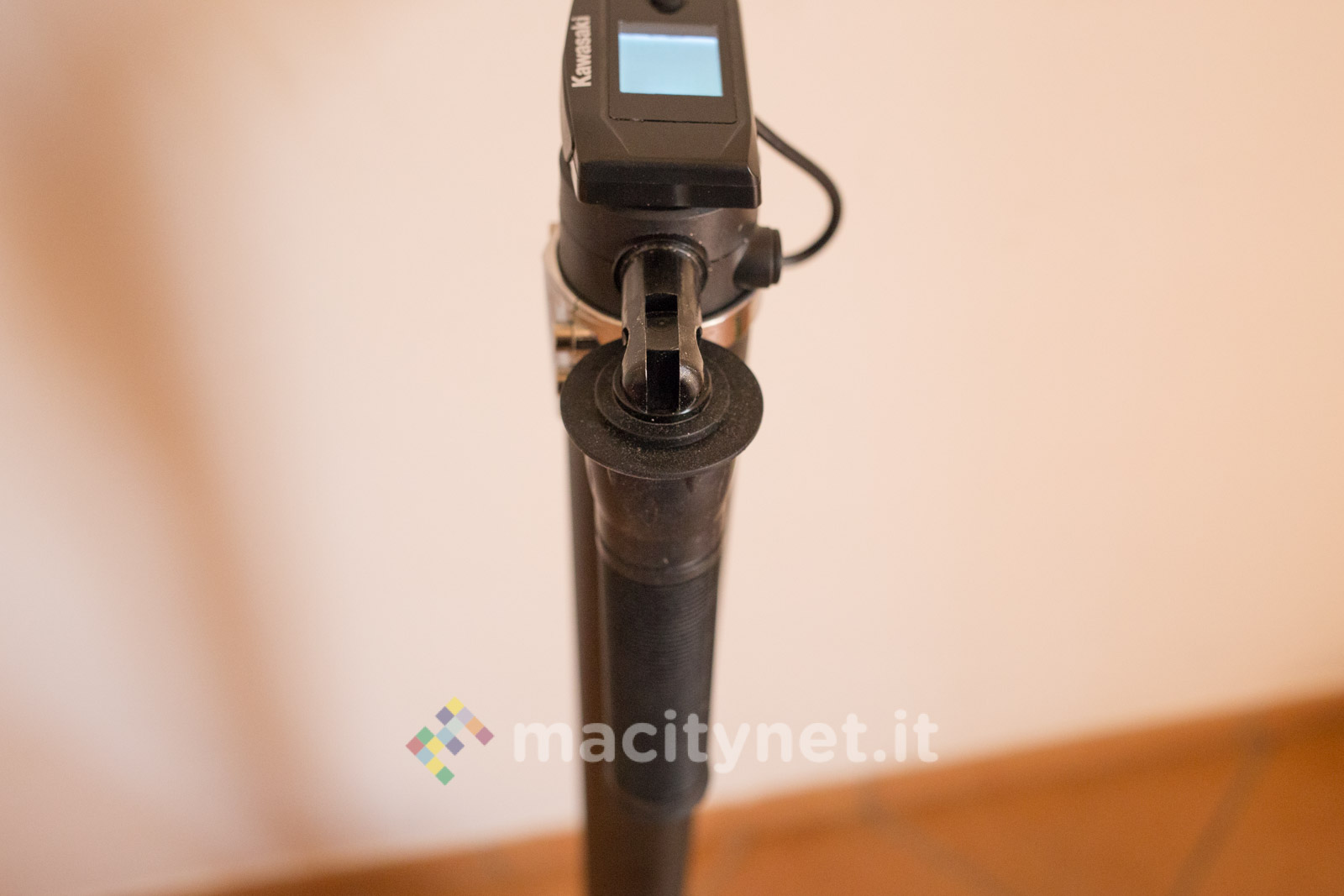
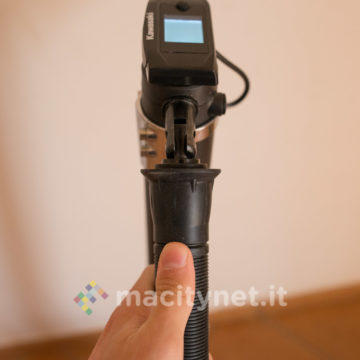
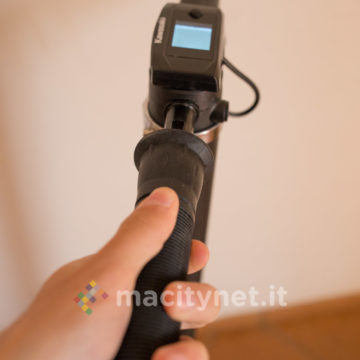
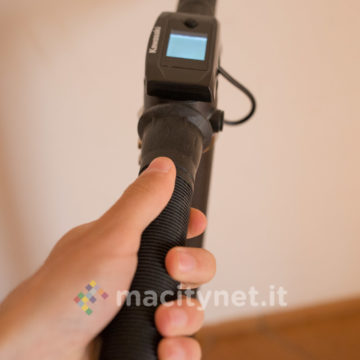
With 6.5 '' wheels , the whole scooter is made of very sturdy metal and apparently capable of brilliantly withstanding bumps and falls, as shown by the many scratches and small dents made by the previous owner. As mentioned, the handles are wide, comfortable to grip and covered in rubber, while the platform is largely covered with a layer similar to sandpaper and which ensures excellent adherence to the rubber sole of the shoes.
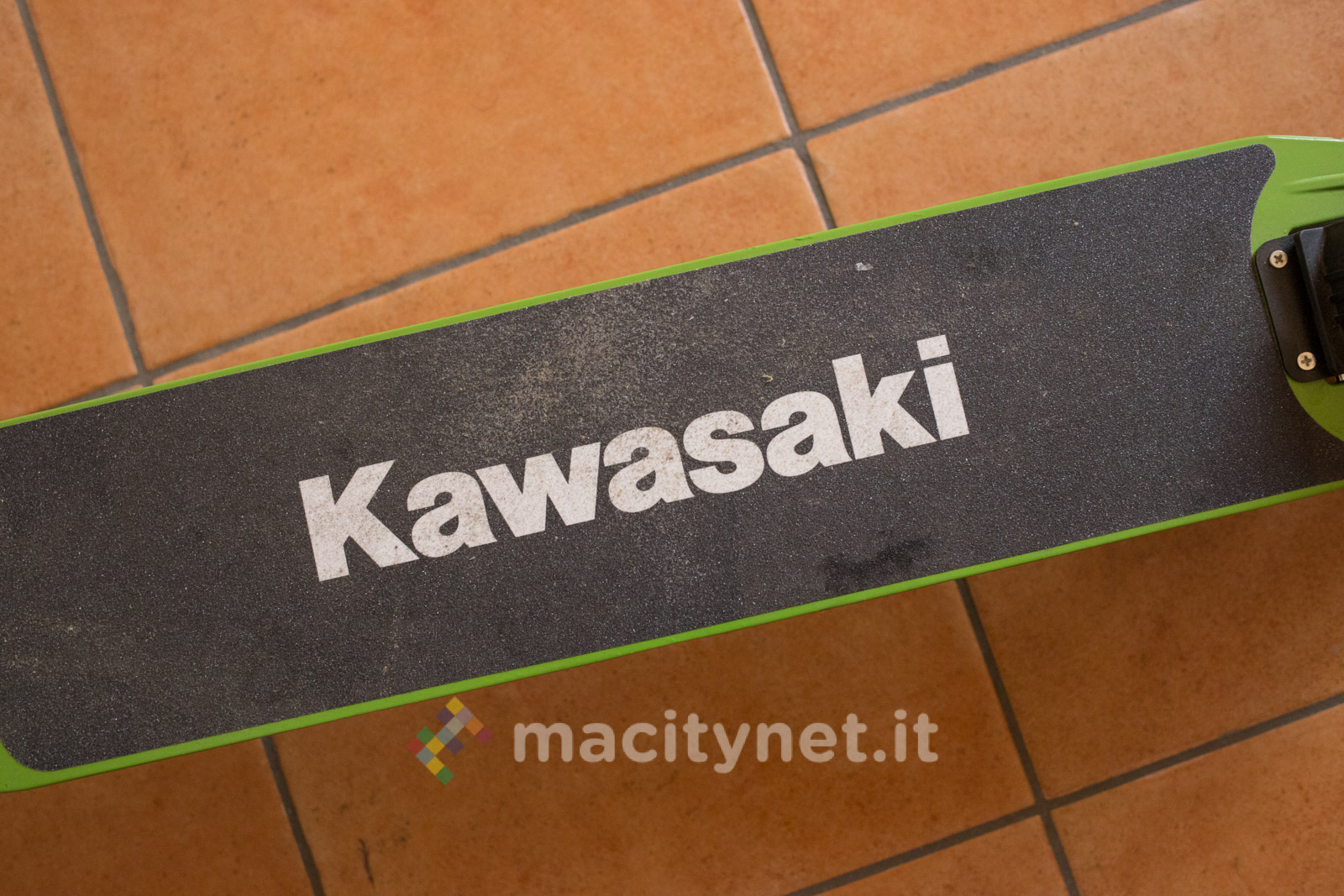
On the rear wheel there is a mudguard under which we noticed the presence of a metal plate: the manual does not mention it and we do not know if it can be used as an emergency brake, but in our tests we did not prevaricate in this sense, actually appreciating its effectiveness especially in the small braking useful to correct the trajectory when moving at high speeds.
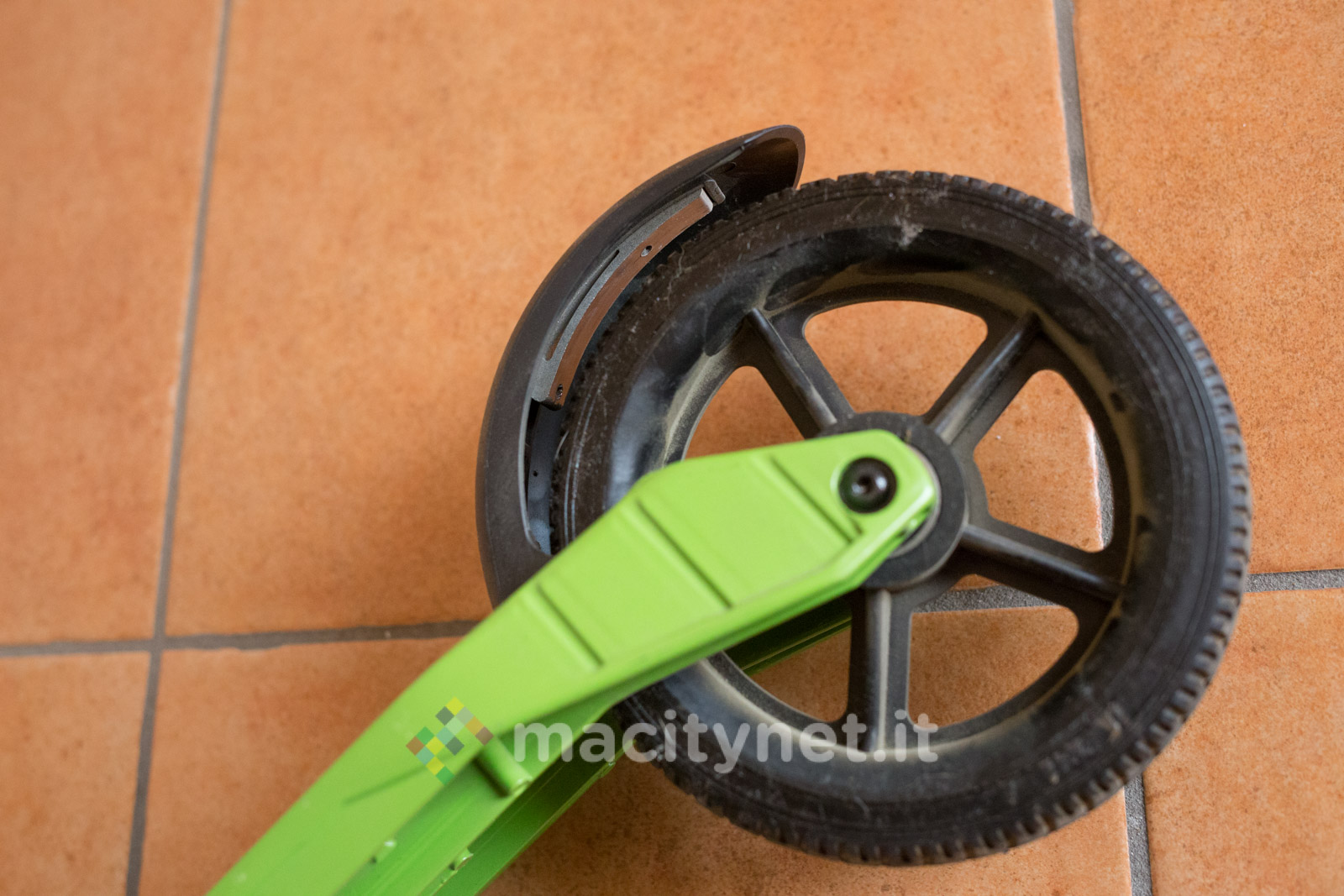
In theory there would also be a display on the handle where speed, kilometers traveled and other statistics are reported and, on the front, a system of LEDs that can be switched on to guarantee better visibility of the moving vehicle at dusk. Unfortunately the previous users were not too kind in the tests making this component unusable. However, for the measurements of our tests we relied on the Runtastic app on the iPhone, strictly in the pocket, thus being able to have a more or less realistic idea of speed and autonomy.
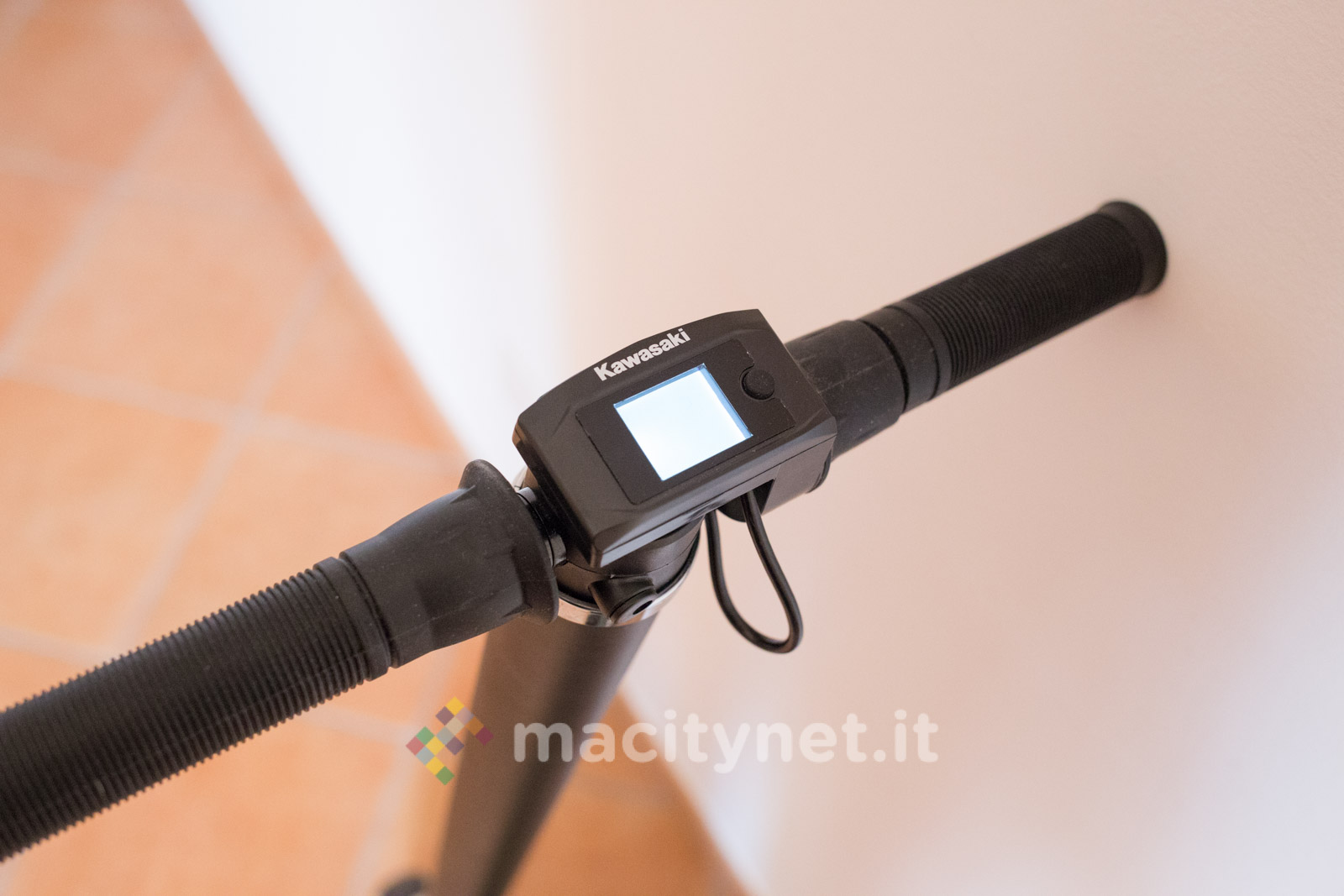
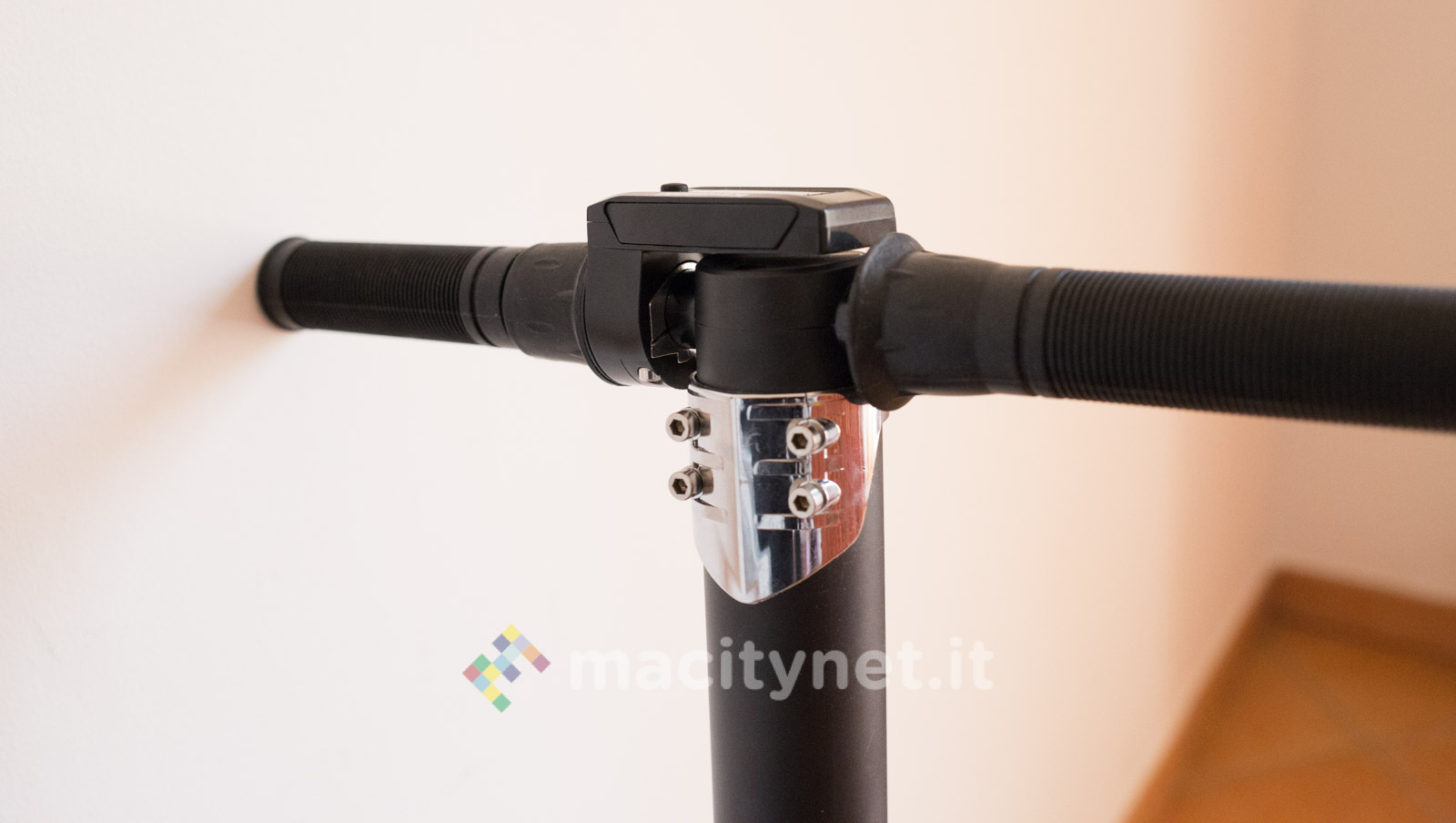
How does it work
Using the scooter (250W power) is very easy but in the first few minutes it is necessary to become familiar with the vehicle, possibly in a large and isolated area. It is enough to slightly rotate part of the right handle (there is a sort of knob a few centimeters wide) to accelerate. One of the things you need to become familiar with is precisely the throttle dosage: a few millimeters of rotation correspond to a powerful start, with the risk of skidding in a few meters.
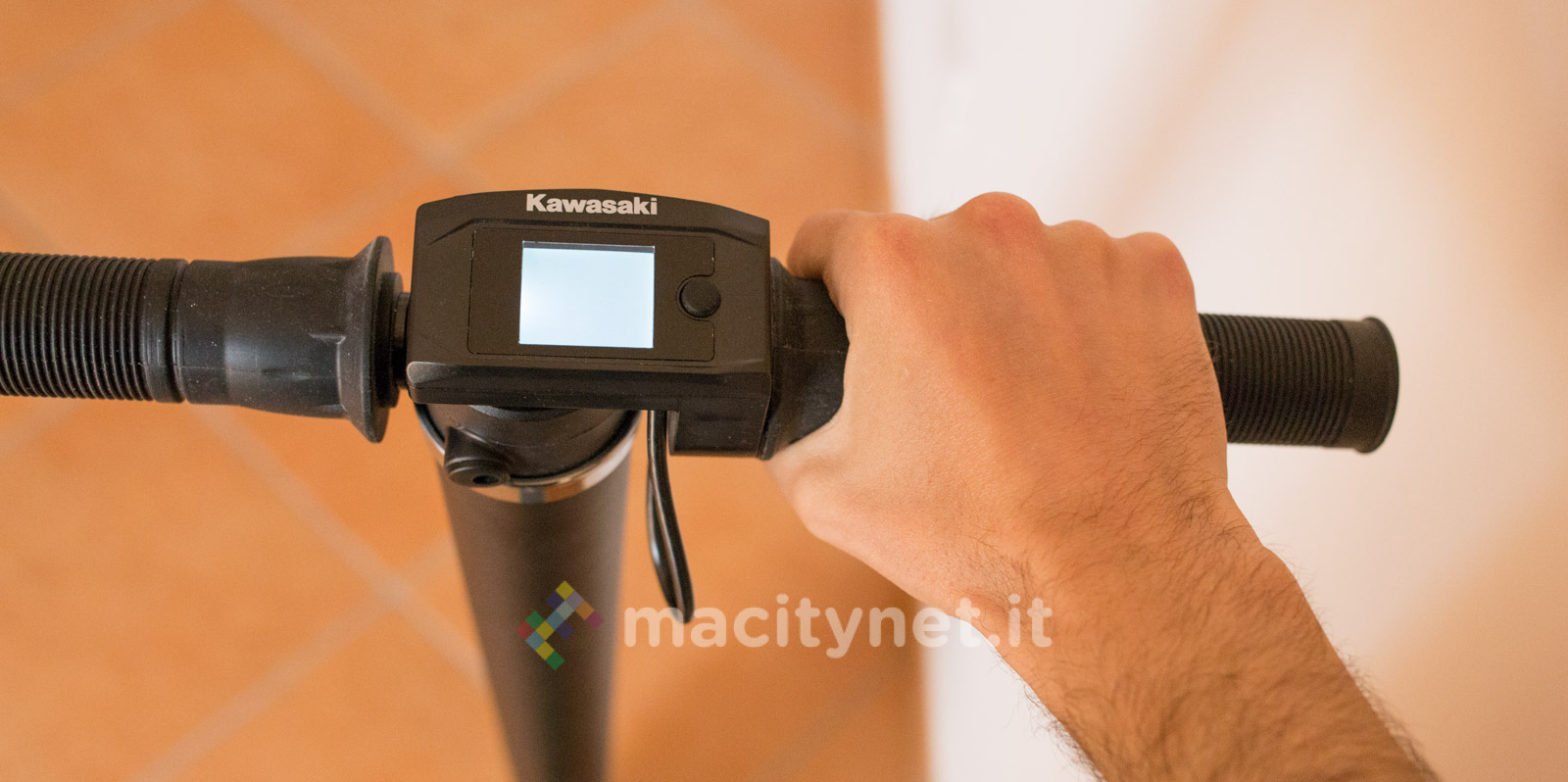
But if a few tens of minutes are enough to learn how to dose the system, especially when starting from a standstill, it is much more difficult to brake (by turning the knob in the opposite direction) without falling : the braking system is very powerful and more than once the scooter is unbalanced forward by slightly lifting the rear wheel, forcing us to jump quickly from the platform to avoid falling to the ground. In reality, in the weeks between one test and the next, we never got used to it completely, preferring the “foot brake” by pressing the mudguard on the rear wheel.
Braking in these cases is much longer and therefore driving requires particular attention: there are not rare cases in which, especially if you use the scooter at maximum speed, it may be necessary to brake in a few meters. A suitable solution could be to combine a brake lever that can be managed with the left hand or, to keep the overall dimensions to a minimum, give at least a wider margin to the rotation of the knob to manage acceleration and braking.
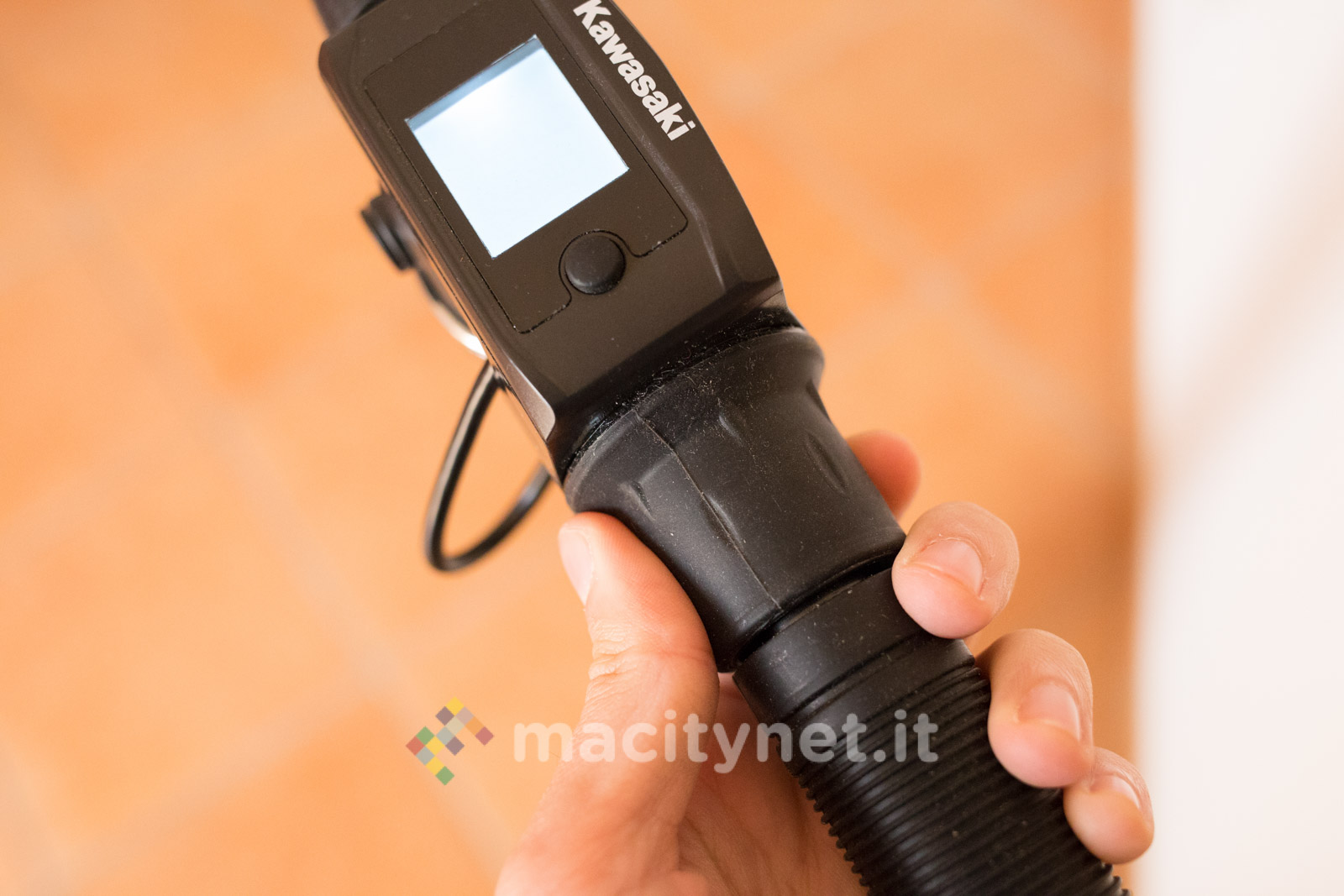
Field test
The scooter offers the same convenience and control as common ones that move with the push of the foot. The only difference is that here the feet will not have to get off the platform and the fatigue during the run is zero.
It also reaches high speeds: in one of our tests, which saw us take a long cycle path in an uncrowded schedule, we maintained an average speed of 17 Km / h and a maximum, probably in the points of slight descent, of well 25 Km / h . It must be said that the writer has a rather small build, equal to a height of about 170 centimeters and a weight of just 54 kg: as the instruction manual itself confirms, the speed and autonomy of the scooter are also influenced by the weight. of the rider, as well as the terrain covered, the slope and the pace set using the accelerator.
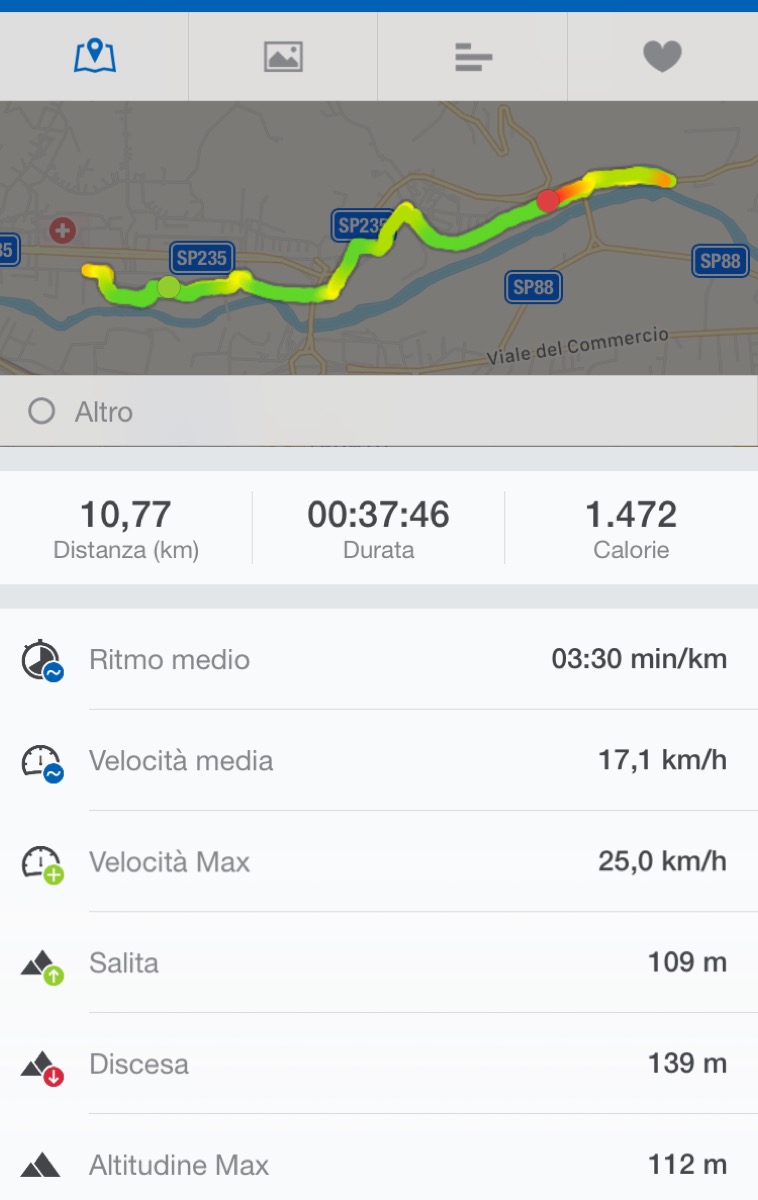
In a test aimed at evaluating the autonomy of the scooter we managed to cover 10.8 Km in 38 minutes . We kept the acceleration almost constantly at the maximum allowed, along the same route previously mentioned, therefore as smooth as possible for a vehicle of this type.
Considering our weight and the type of terrain, the data had initially discouraged us as the manual, packaging and website report an average range of 20 km. practically everywhere it is a mistake by the company: the autonomy of the scooter is actually 10 km and based on what we have learned it is thanks to our report that they would already be correcting manuals and everything else with the correct value.

Knowing that the scooter can travel – at best – a maximum of ten kilometers is essential to “build your own strategy”. In fact, it would be necessary to do the math, perhaps relying on smartphone maps, to measure the distance of the planned movements and if possible keep a few kilometers of margin to be sure not to run out of energy. The battery (4,000 mAh) recharges in about 3 hours and an empty scooter halfway through the journey is not convenient.
Pushing it like a classic scooter , with which in these cases it would be natural to make a comparison, is not at all easy. Firstly, because the front wheel, that is the motorized one, offers some resistance, thus forcing us to use more force and therefore also doubling the effort, since we will have to move an unlit vehicle that weighs almost 11 kilograms. In addition, the height of the platform from the ground (remember 12–14 centimeters) does not help, as you almost have to go down with one leg for each push. In cases like this, perhaps the most convenient solution also from the point of view of fatigue is to get off and drag it by hand as you would with a bicycle and complete the journey on foot.
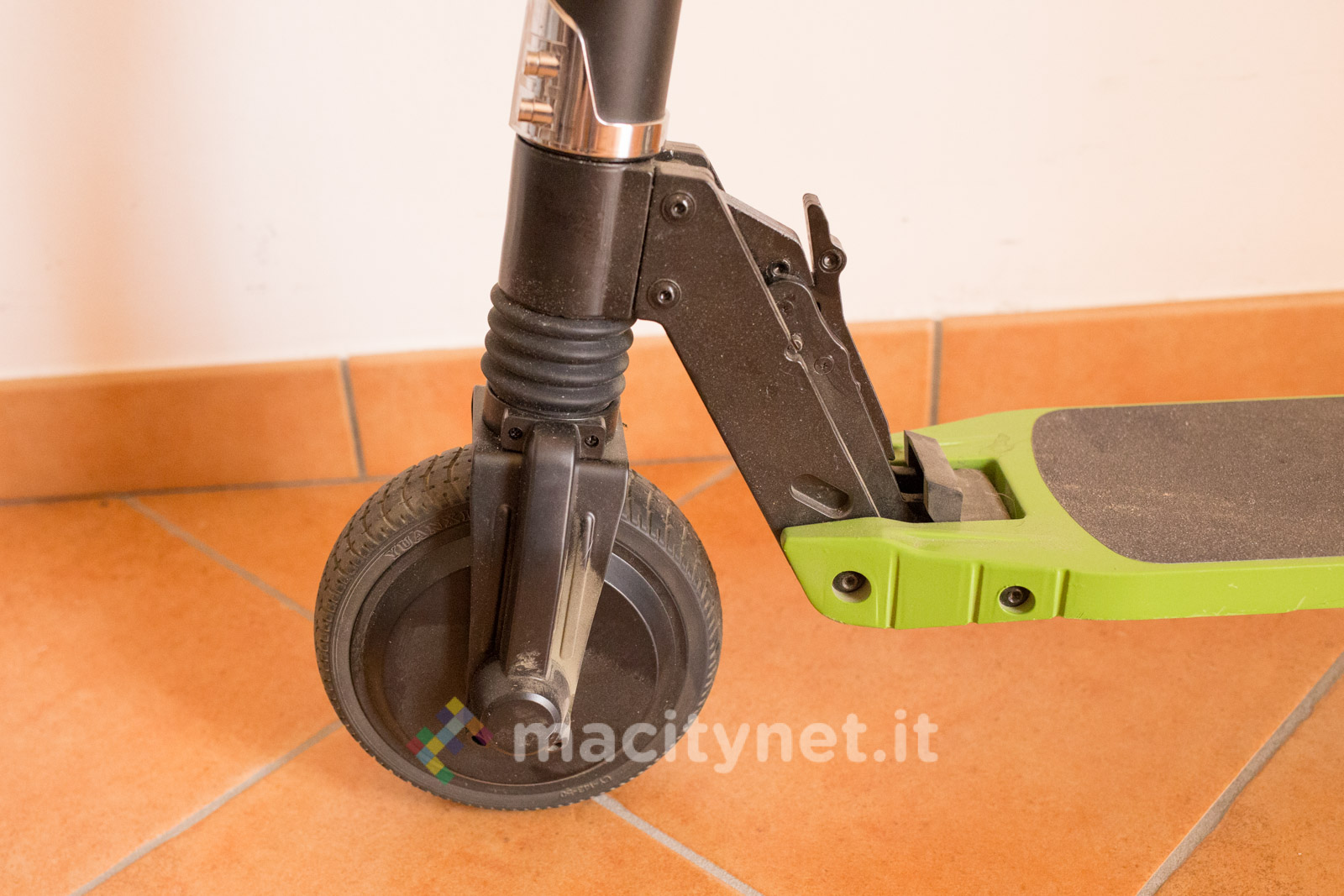
Conclusions
As we have learned in these lines, there are not a few limits that must be accepted when choosing the Kawasaki electric scooter (official acronym KX-FS6.5 Folding Scooter) for simple entertainment or for real trips around the city. Those who evaluate the purchase must also take into account that it is forbidden to use it for children under the age of 8 and up to 16 years, circulation must be carried out with the constant visual attention of an adult. The IP54 certification makes it possible to use it without worries outdoors (as it is protected from dust and splashes of water) as long as the rider weighs between 30 and 100 kg.
The biggest disadvantage is due to the regulatory vacuum currently in force in our country, whose circulation is at risk of a fine practically everywhere.
Retail price
The Kawasaki scooter is distributed by Puro and costs € 529.99. You can buy it directly from the official website.
,,





